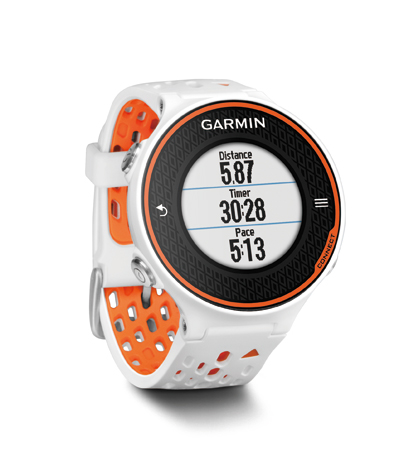
Growing up, going for a run meant simply putting on my trainers and heading out the door. These days, I won’t leave the house until I’m plugged into my music, and I won’t start running until satellites begin tracking on my GPS-enabled watch, keeping tabs on my distance, pace and heart rate while I run.
Some say technology has made us lazy. Everything is electronic these days, so we no longer have to do so many of the things we used to. And with millions of hours of entertainment at our fingertips, why leave the couch?
Another view is that technology has buoyed our health and fitness regimes. Technology is making us fitter and faster than ever before. From motivational tools to measuring devices, no step, stroke or pedal has been left untouched by technology.

And this is good news for those who are constantly on the go. We are more motivated to exercise and have more information telling us about the exercise we are doing. With sensors and alarms, bleeps and screen blips, technology helps us stick to our routine, no matter the time zone. Instantaneous feedback on our weight, daily movements and sleep means we can keep an eye on how we’re doing while away from home.
Since inactivity has been discovered as a bigger contributor to health risks than smoking, most tracking devices and sophisticated sports watches now include sensors to remind us to keep moving every 45 minutes. Long-haul flights need no longer be sedentary back-to-back movie marathons, but snoozing sessions broken up with walking breaks to satisfy our buzzing wearable devices.
Not convinced? Feed your curiosity with a collection of our favourite sporting gadgets.
Best running gadget
Garmin Forerunner 620,
US$400; garmin.com
This touchscreen GPS running watch
from Garmin tracks your distance, pace and heart rate, and utilises tracking technology to calculate your recovery time. Think that tough run last night was enough to put you on the couch for a week? Let the Forerunner 620 be the judge! Pair it with a heart rate monitor and it calculates your VO2 max (measure of aerobic capacity), cadence, ground contact time and vertical oscillation. The Forerunner 620 automatically caches satellite locations so its GPS acquisition is considerably faster than most watches of its kind. Best of all, its inbuilt connectivity feature enables you to sync the watch with your smartphone for instant data uploads.
Best sports tracking app
Strava, free or upgrade to premium for US$6 a month/US$60 a year; strava.com
Looking for extra motivation for your next run or cycle? The Strava app tracks distance, moving time, average speed, pace and calories burned for 28 different activities including canoeing, surfing and yoga. It brings a fiercely competitive edge to fitness tracking for running and cycling, as after uploading an activity you can compare your performance against other Strava users over sections of the same route. The app offers numerous monthly challenges, from the most kilometres run in a month to most vertical kilometres climbed. It also allows you to form and join clubs to compete on a weekly leaderboard.
Best fitness tracker
Polar Loop, US$110; polarloop.com
There are several fitness trackers on the market, but the Polar Loop remains one of the best-priced 24/7 tracking devices that connects to a heart rate monitor. Not only does it track your daily movements and remind you to move if you’ve been sitting too long, the heart rate monitor function also allows for a more accurate measure of your fitness activity. At night, Polar Loop starts tracking your sleep time automatically; check the Polar Flow mobile app to find out the quality and length of your sleep.
Best bike toy
Garmin Edge 1000, US$600; garmin.com
The Edge 1000 is the granddaddy of all bike computers: navigate your way anywhere in the world while viewing your essential stats such as heart rate, cadence and wattage easily on its 7.6cm screen. The Edge 1000 is also powered with other performance analytic potential, such as the pedal-based power meter that measures total power, left to right balance and cadence. Paired with a smartphone and Garmin’s mobile app, Garmin Connect, the Edge 1000 offers a suite of connected features, including the weather, live tracking, incoming call and text alerts, and social media sharing.
Best scales
Fitbit Aria Wifi Smart Scale, US$130; fitbit.com
After capturing your weight, BMI and body fat percentage, the Aria syncs wirelessly to your private Fitbit account to track your progress. For those looking to gain weight, the Aria also provides body composition records to show when you’re building muscle. The scale recognises up to eight different users and is compatible with 13 other third party applications.
Best swimming MP3 player
Finis Neptune V2, US$160; finisinc.com
Rather than using earphones, Finis Neptune V2 uses revolutionary bone conduction technology to transmit audio through the cheekbone directly into the inner ear so it feels like the music is playing in your head. It also makes for a more comfortable underwater audio experience, and by keeping the ears free from obstruction, you can still hear sounds around you in the water. Without the hassle of waterproof cases or the expense of waterproofing treatments, Finis Neptune V2 is completely waterproof – it even floats in the water. It has a simple display and file transfer compatibility with iTunes, the only downside being that it doesn’t have playlist functionality. But with 4GB of storage – approximately 1,000 songs or 60 hours of playback – and eight hours of battery life, it offers more storage than a 2GB waterproofed iPod shuffle.
Best earphones
Yurbuds Leap Wireless, US$100; yurbuds.com
Yurbuds have combined their patented Twist Lock technology, which ensures earphones stay in even the most unaccommodating of ears, with the power of wireless in the Leap Wireless earphones. Sweat-proof, water-resistant and with no wires to get in your way, working out to music with Yurbuds will help you get the most out of your training session. It’s powered by Bluetooth, equipped with a microphone and offers up to six hours of wireless playback. Yurbuds offers a smaller fit for the ladies, too.
Best multi-sport watch
Suunto Ambit3 Peak, US$500; suunto.com
Are your weekends straight out of the pages of an outdoors magazine, packed with running, biking, open water swimming and mountain climbing? If so, you need a watch to track your adventures. Worn by the likes of elite ultramarathoner Kilian Jornet and mountaineer Ueli Steck, the Suunto Ambit3 Peak is one of the most functional – and expensive – multi-sports watches on the market. At the most basic level it tracks your speed, pace and distance, but its features are way more advanced, from measuring your heart rate in a pool, and logging multiple sports in one log – perfect if you’re doing a triathlon. Fully customisable and integrated with your smartphone, in battery saving mode it can last for 50 hours – one of the longest for a watch of its kind on the market.
Best performance toy
Leica Pinmaster II Rangefinder, $600; leica-camera.com
Is your club selection and distance judging letting down your golf game? Then you need the Leica Pinmaster II, a beautifully crafted rangefinder from German optics experts Leica. A good rangefinder gives you greater confidence on the green by improving club selection and avoiding the need to pace out distances while also speeding up play. It may have been on the market a few years, but the Leica Pinmaster II remains one of the smallest and lightest rangefinders around, boasting seven times magnification and a range of up to 750 metres. It’s simple to use, too, with the First-Target Logic feature measuring the objects closer to you for greater precision, while the scan mode gives a reading of distances in front of you.
Best sports camera
GoPro Hero4 Black, $500; Silver US$400; gopro.com
GoPro, the tiny box camera that has become virtually synonymous with action cameras, launched the new Hero4 collection in October. The Hero4 Black captures cinema-quality video and improved image quality, low-light performance, highlight moment tagging and an improved user interface. At US$100 cheape`r is the Hero4 Silver, which delivers almost the same image quality as Hero4 Black without some of the higher performance video capture modes.












